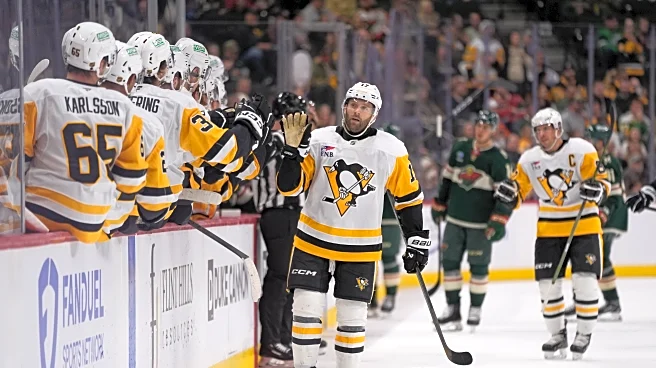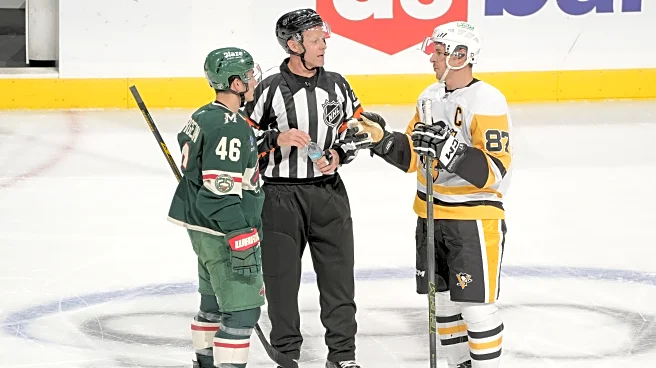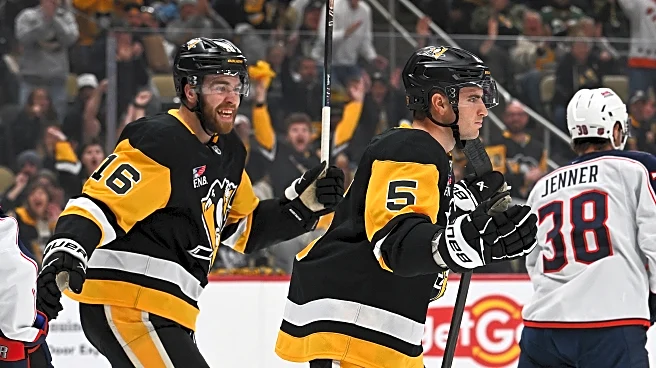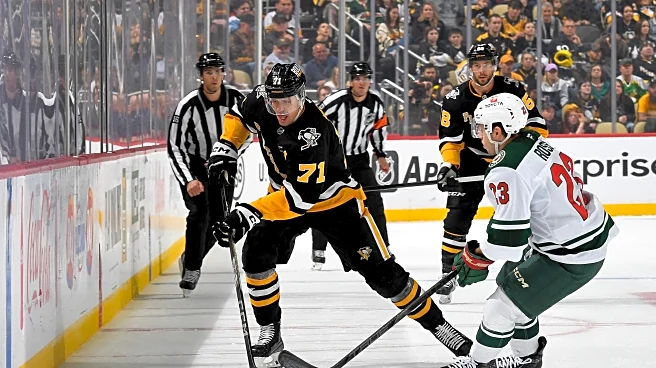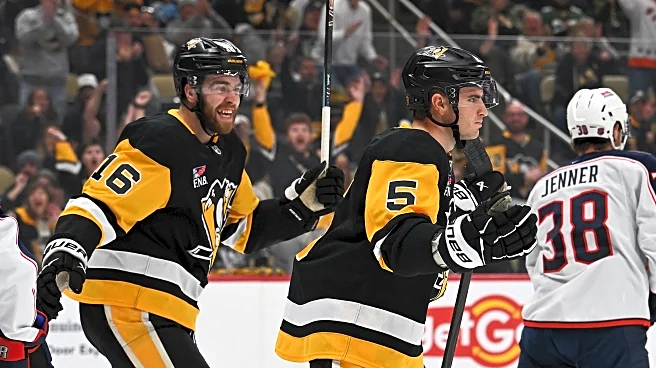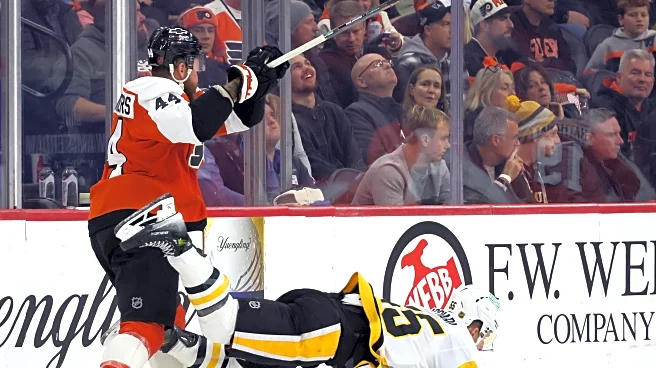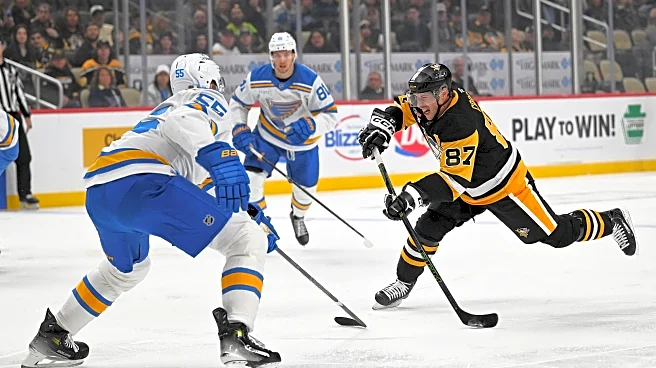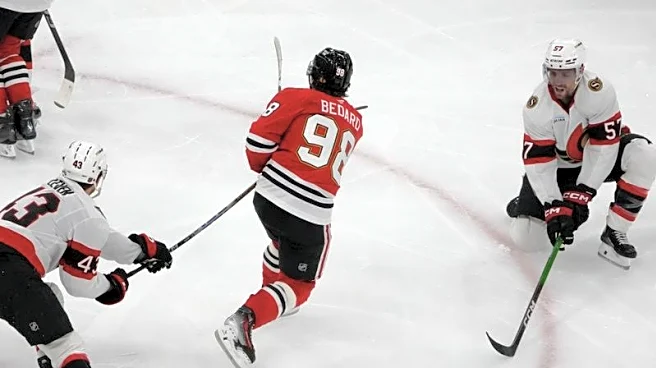The Pittsburgh Penguins made the decision on Thursday that they are going to let 18-year-old rookie forward Ben Kindel use the first-year of his entry-level contract by playing him in his 10th game of the 2025-26
regular season. They had the option to save that year and send him back to his junior league team after his first nine games. There was no way that would have made sense given the way he played those first nine games for the Penguins. Not only as he exceeded pretty much all expectations anybody could have had for him in his draft year, but also because he has arguably been one of the Penguins’ most consistent and best forwards, even if the traditional box score line does not always show it.
He showed why he has been that important yet again in the Penguins’ 4-1 win over the Minnesota Wild.
Simply put, his line helped change the game.
Again.
As it has consistently done, and as it has done for the second time in as many games this week.
Think back to Tuesday’s game in Philadelphia, and how sluggish the Penguins looked through the first 40 minutes. After two periods they seemed to have nothing going for them, and very much looked like a team that was playing its third game in four nights and the second part of a back-to-back (with travel) against a rested team. The line that finally gave them something was the Kindel, Ville Koivunen, Thomas Novak line. They had an extended shift in the offensive zone, created some big chances, and finally helped swing the game in the Penguins’ favor. From that point on the Penguins turned the tables on the Flyers and pretty much controlled play the rest of the game, eventually leading to a Sidney Crosby game-tying goal to help them at least get a point in the standings.
That line did the same thing on Thursday.
Early in the second period the Penguins were trailing, 1-0, and did not play the strongest first period. Add in the bad luck of having a potential game-tying goal taken away (on a very questionable and controversial call) and it was easy to think they simply might be having a tough night.
Then the Kindel-Koivunen-Novak line took over, again, and produced the game-tying goal when Ryan Shea scored his second of the season.
From that point on, the Penguins were in complete control of the game and systematically dominated it. It was some of the best hockey they have played all season as part of their now 8-2-2 start.
Shortly after Bryan Rust scored his fourth goal of the season to give the Penguins the lead, Kindel scored his third goal of the season and showed that he belongs on the top power play unit.
Anthony Mantha eventually added his sixth goal of the season on an empty-net to secure the win.
Those are all just box score details. Important details, sure, but they do not tell the story of the game.
The story of the game is what the Penguins’ third line of Kindel, Koivunen and Novak was able to do. Because it was objectively speaking the team’s best line of the night, and the one that completely turned the game in their favor.
That trio played 8:58 of ice-time together during 5-on-5 play, and during that time they not only outscored the Wild by a 1-0 margin, they also had a staggering expected goals share of 91.8 percent, accumulating 1.02 expected goals for the Penguins, and allowing just 0.09 for the Wild. The Wild did not generate a single high-danger scoring chance against that trio and only one scoring chance of any kind. The Penguins generated nine scoring chances with that line on the ice, four high-danger chances and a goal.
What stands out the most about that performance is they started more shifts in the defensive zone (four) than any other Penguins line, while the Minnesota Wild forward they saw more than any other was none other than Kirill Kaprizov, not only their best player, but also one of the best players in the NHL.
The forward they saw the second-most was Marco Rossi, who entered play on Thursday averaging a point-per-game.
They mostly faced the Wild’s best players and not only shut them down, they completely dominated them.
With an 18-year-old center leading the way.
When it comes to driving possession and dictating the pace of games, the numbers point to Kindel being the Penguins’ most efficient player this season and his line being their best. That is not an exaggeration. That is not hyperbole. It is not hype. It is just reality. Individually, Kindel has a 58 percent expected goals share when he is on the ice. No player on the team with at least 100 minutes of 5-on-5 ice-time has a higher mark. Offensively speaking, the Penguins are generating 3.67 expected goals per 60 minutes with Kindel on the ice. That not only leads the Penguins, it is top-15 in the entire NHL. He is also the only player in the top-20 that does not have an offensive zone start percentage higher than 50 percent (Kindel is starting just 47.1 percent of his shifts in the offensive zone).
The Penguins are asking a lot of him. He is delivering.
The goals are not yet always there, but given the talent that line possesses, and the way they are pushing play, you have to think/hope the goals will start to be there.
This is also why I do not care about what line this is considered on the team’s hierarchy of lines. Call it the first line, second line, third line …. whatever. Just let them play their game and let everything else take care of itself. Your third line does not have to be a checking line or a grinding line. It should be another line capable of scoring and another line capable of pushing the pace of play. If you can put three skilled lines on the ice, you should do it and not overthink it. This is a big reason why I think the NHL is the best development place for Kindel at this point, and why pairing him up with somebody like Koivunen (another young player with skill) can be beneficial for both of them and the team. Keep them together until they give you a reason not to keep them together.



